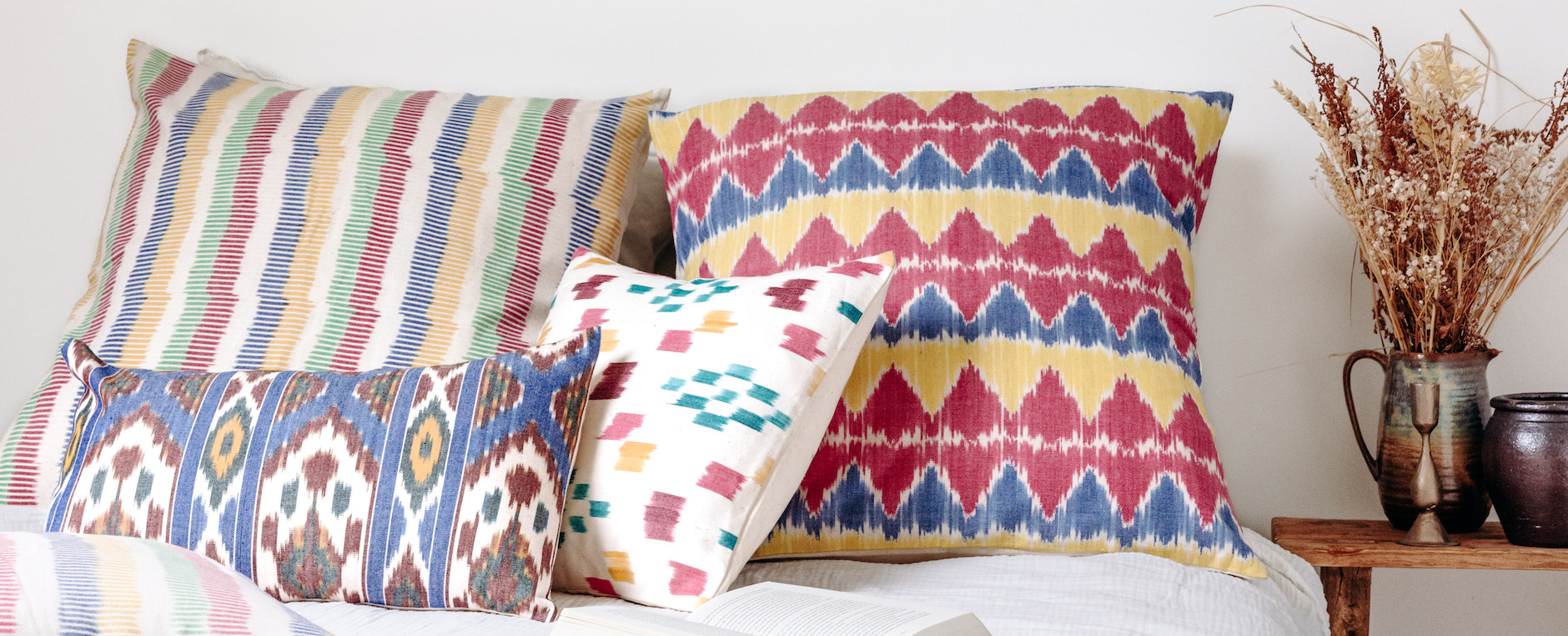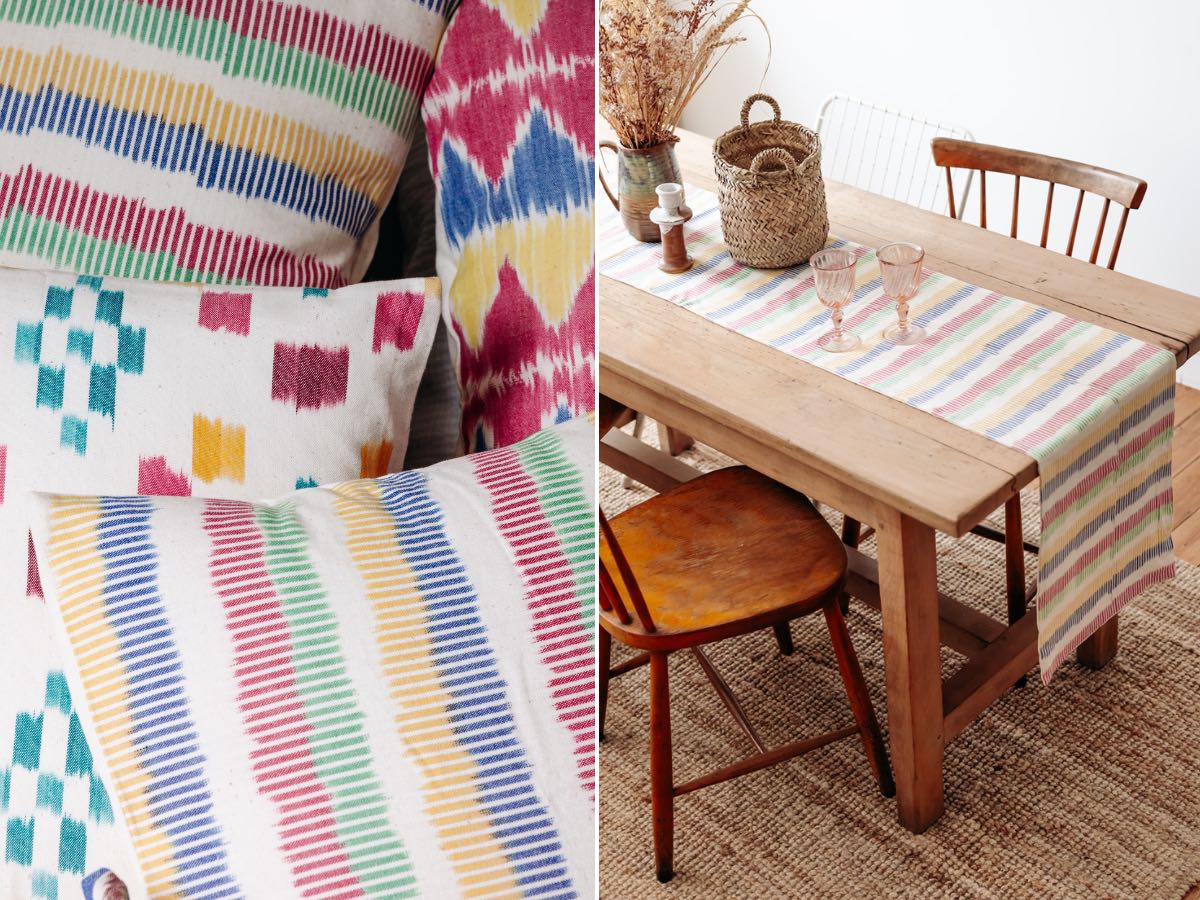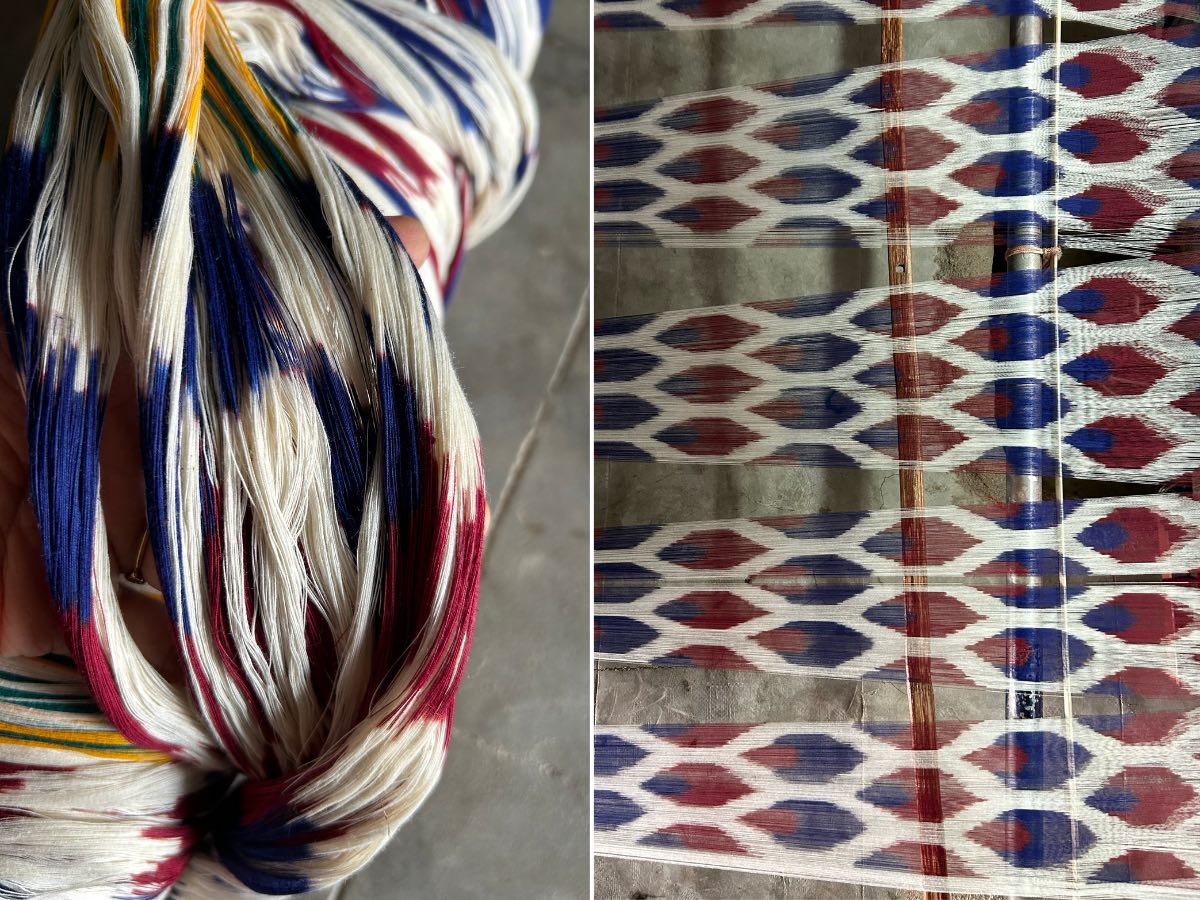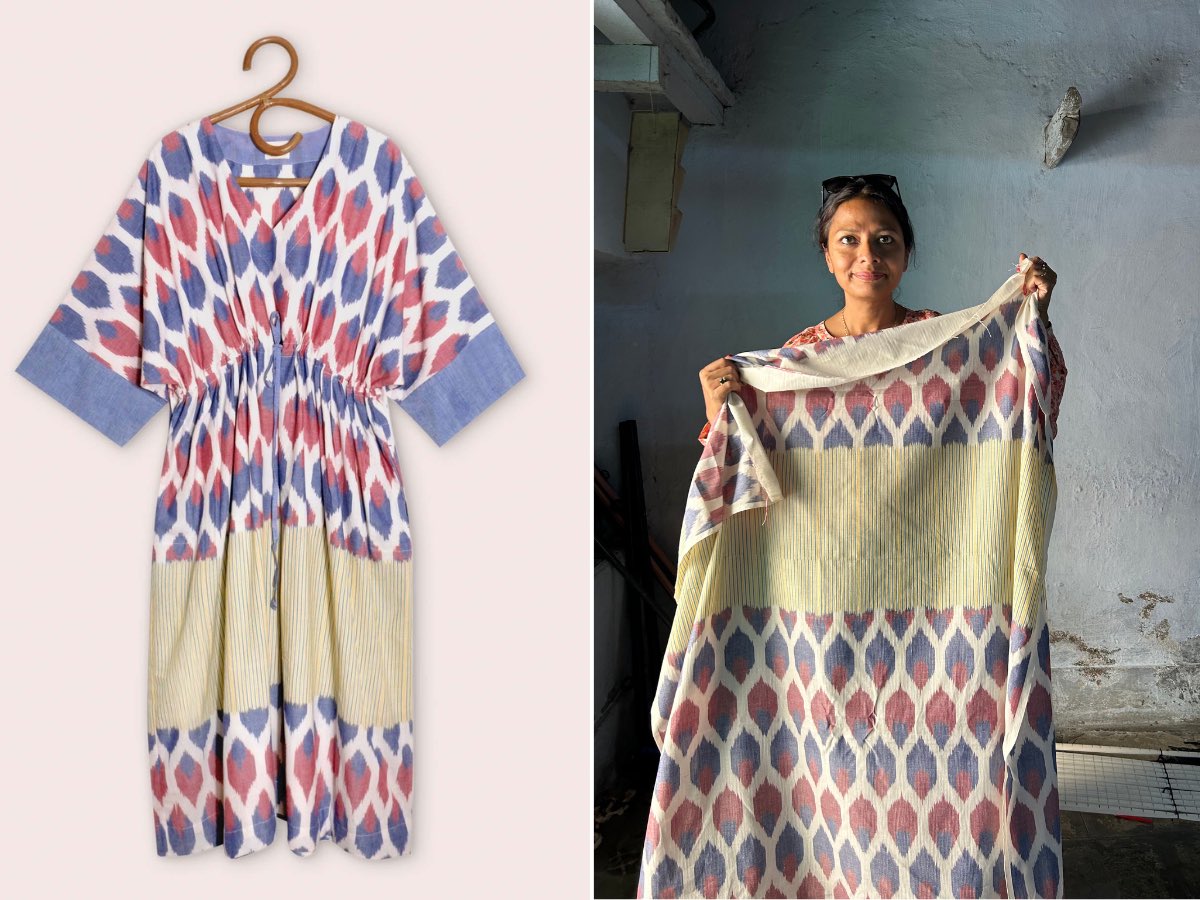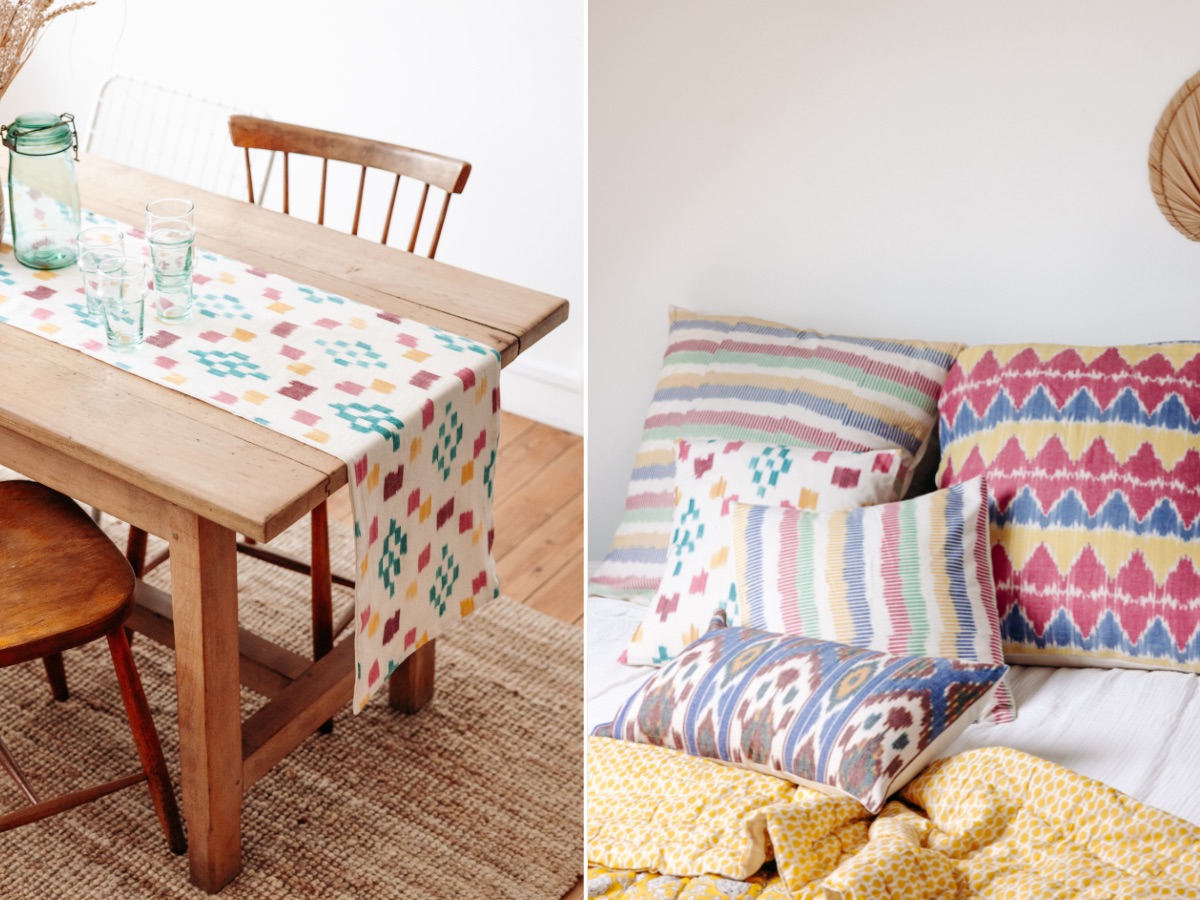The beauty of ikat fabrics
Weaving bonds across cultures
For Usha, our founder, exploring new ancestral artisanal techniques from India is always a source of joy and inspiration. This month, we are delighted to unveil our new Ikat line, crafted in southern India, near Hyderabad. Ikat is an ancient dyeing and weaving technique - a cultural treasure, a traditional art dating back centuries and still captivating the world with its meticulous craftsmanship. We delve into its origins and the secrets of this technique, which offers us a uniquely decorative outcome for this season!
Ikat pillows and table runner
A bit of history
The term "Ikat" originates from the Malay "mengikat," meaning "to bind." It refers to a distinctive weaving technique for decorative textiles, where warp or weft threads are resist-dyed based on the pattern before weaving. This process gives the motifs blurred edges and the fabric a slightly impressionistic appearance, reminiscent of Claude Monet's Water Lilies series. This technique developed independently worldwide, with variations found from Indonesia to South America, through Japan, Central Asia, and the Middle East.
A work of patience and precision
Ikat weaving requires meticulous calculations, emphasizing mathematical symmetry. Every centimeter is meticulously calculated and connected in a complex and skill-demanding process. Ikat has been called the "poetry of the loom" due to the tedious and meticulous weaving process. The characteristic blur of the fabric is the result of the extreme difficulty for the weaver to align the dyed threads to perfectly highlight the pattern in the final fabric.
Ikat at Jamini
There are three types of Ikat: warp Ikat, weft Ikat, and double Ikat. Our new Ikat collection utilizes the warp Ikat technique, where only warp threads are resist-dyed to create the patterns. Bundles of threads are tied and dyed identically, creating small groups of identical motifs. This is the oldest and most common form of Ikat.
Tdrop dress - Usha in the manufacturing workshops
Explanation of the warp Ikat technique
- Firstly, the pattern is drawn on paper.
- Then, the loom is prepared with stretched warp threads, and the pattern is transferred onto these threads.
- The threads are then tightly bound with raffia wherever they need to resist dye.
- Next, the threads are removed from the loom, grouped in order, and immersed in a dye vat, where the tied areas resist dye.
- Once the selected areas are untied according to the pattern, they are immersed in a second bath, which may be the same color as the first or a different color.
- Finally, all the raffia is removed, and the warp threads are re-stretched on the loom. The fabric is then woven with a plain weft thread.
Explore the intricate details of each of our pieces, close your eyes, and embark on a journey to the sunny village of southern India, where every centimeter of fabric has been lovingly and carefully handcrafted!
Ikat table runner and pillows

